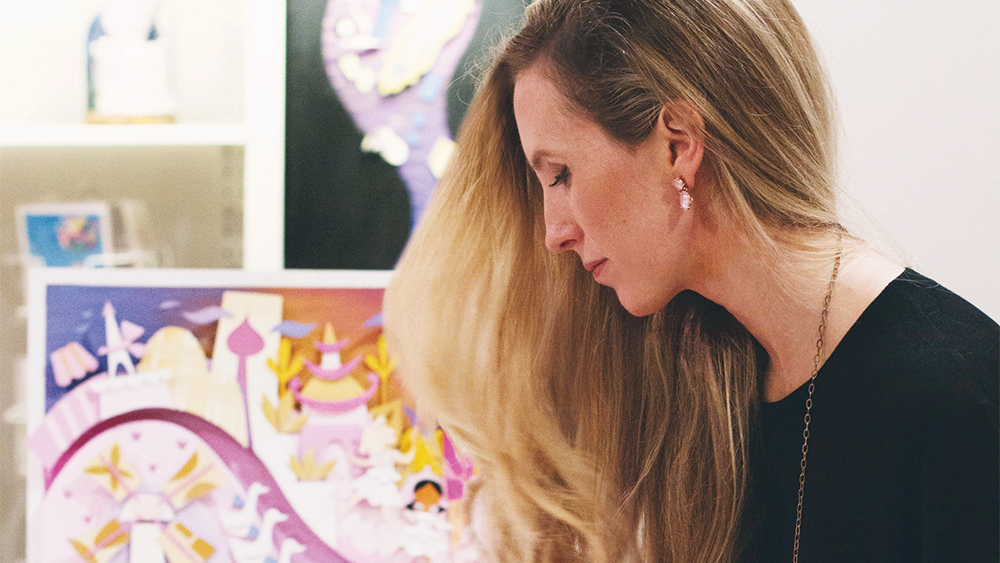Disney Artist Brittney Lee Added Mid-Century Influence to ‘Frozen 2,’ VR ‘Myth: A Frozen Tale’
By Thomas J. McLean
LOS ANGELES (Variety.com) – Brittney Lee has become something of a rock star artist for Walt Disney Animation Studios. Joining the studio 10 years ago on the strength of a design portfolio she put together in her off-time while working as an animator on an online multiplayer game, she’s worked on most of the studio’s features and shorts since 2011’s “Wreck It Ralph.” “Frozen,” however, holds a special place in the Pennsylvania native’s heart. In addition to her work on the 2013 Oscar-winner, she brought a mix of mid-century art influences as well as an interest in paper-cut art, aka quilling, to the first feature, a “Frozen” children’s book she illustrated, and to “Frozen II.” The visual development artist and production designer also jumped into the unknown waters of VR as production designer on the VES Award-nominated “Myth: A Frozen Tale.”
What are your artistic influences?
Oh, it’s all over the place. I love looking at everything. About the same time that I applied here, I started to fall in love with paper-cut artwork and quilling, and so I was looking at artists like Megan Brain and Kevin Kidney, who work in and around the animation industry and do mixed-media pieces, as well as an artist named Yulia Brodskaya. She does amazing quilling work. And I was always a fan of — without even knowing it — [Disney legends] Mary Blair and Eyvind Earle, who both have a very graphic style and worked in the animation industry as well. But my first love in animation was the art of Glen Keane and Mark Henn and Eric Goldberg.
What looks that you were going for with in designing the costumes for Elsa in “Frozen II”?
We didn’t necessarily know as we started designing the costumes exactly where or what she would be put through. We knew that there was going to be a higher level [of action] and moving through the woods or moving through the elements than there was on the first film for her. And so one of the first directions that was given was to pull her hemline up off of the ground. She had always been in these floor-length gowns with huge trains before this. Well, if we if we lift her hemline, how do we maintain a silhouette that that feels familiar with her? We would reintroduce elements like sheer capes and material details that still felt like her while lifting her hemline off the ground.
How did you come to work with director Jeff Gipson on “”?
He had already cemented the idea that he wanted it to feel like a story-book and almost like a silhouetted pop-up book. And that’s something that, for me, especially in my personal work, really resonates. I love that graphic style, and so it felt like when he was pitching to the whole department like he was pitching to me. I felt like this very much is up my alley, I am interested in this, even though it’s scary because I’d never really seen anything in VR.
What were some of the goals for the production design on “Myth”?
Jeff’s initial pitch had really clearly set forth that he wanted to be playful and he wanted to clearly establish one setting, which is the bookend of “Myth,” where you’re sort of in the “Frozen“ world and you wanted that to look as much like the “Frozen“ world as it could. … I was hoping that we could push the stylized world into feeling somewhat hand-crafted, like something that when you were in there someone had made rather than a vast realistic space. … And that’s a different problem to solve than what it would be if you were looking at it on a screen.
How were the challenges on the second film different from what you did on the first “Frozen”?
My job on the second film was really trying to hone in on what made sense for [Elsa] and how do we push her narrative forward with the things that she’s wearing and what does that say about her at any given point in time. So we got really focused in that arena and that allowed me to more broadly work with the teams who were building these costumes and building them to perform. So I think I was more hands on in this film with working with modeling and tech [animation] and simulation.

